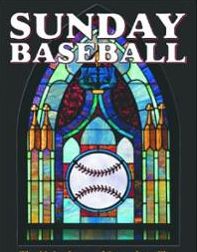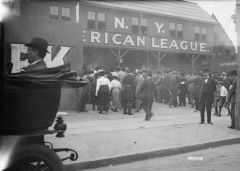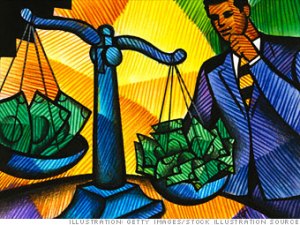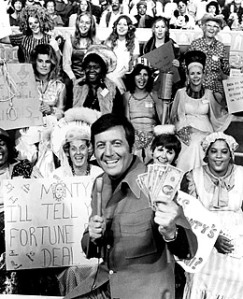A brief history of performance enhancing drugs:
Olympic Games, B.C. “The use of drugs to enhance performance in sports has certainly occurred since the time of the original Olympic Games [from 776 to 393 BC]. The origin of the word ‘doping’ is attributed to the Dutch word ‘doop,’ which is a viscous opium juice, the drug of choice of the ancient Greeks.” –Larry D. Bowers, PhD “Athletic Drug Testing,” Clinics in Sports Medicine, Apr. 1, 1998
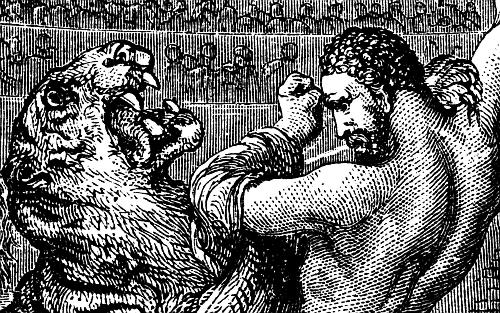
The Colosseum Games, A.D. Gladiator competitions and chariot races are popular in Ancient Roman culture and the Coliseum is expanded to hold 60,000 spectators in 100 AD. Chariot racers feed their horses substances such as hydromel (an alcoholic beverage made from honey) to make them run faster and gladiators ingest hallucinogens and stimulants such as strychnine to stave off fatigue and injury and to improve the intensity of their fights. — Ramlan Abdul Aziz, MD “History of Doping,” Presented at the WADA Asia Education Symposium, Aug. 29, 2006
1800s “The modern applications [of drug use in sports] began in the late nineteenth century, with preparations made from the coca leaf — the source of cocaine and related alkaloids. Vin Mariani, a widely used mixture of coca leaf extract and wine, was even called ‘the wine for athletes.’ It was used by French cyclists and… by a champion lacrosse team. Coca and cocaine were popular because they staved off the sense of fatigue and hunger brought on by prolonged exertion.” — T. H Murray, PhD “The Coercive Power of Drugs in Sports,” The Hastings Center Report, Aug. 1983
1886 Twenty-four-year-old Welsh cyclist Arthur Linton dies during a race from Bordeaux to Paris; though the cause of death is reported as typhoid fever, he is believed to have taken trimethyl, a stimulant. (SportsIllustrated)
1904 “Olympics marathon runner, Thomas Hicks, was using a mixture of brandy and strychnine [a stimulant that is fatal in high doses] and nearly died. Mixtures of strychnine, heroin, cocaine, and caffeine were used widely by athletes and each coach or team developed its own unique secret formulae. This was common practice until heroin and cocaine became available only by prescription in the 1920s.” — Mark S. Gold, MD Performance-Enhancing Medications and Drugs of Abuse, 1992
1940-45 According to anecdotal accounts, the Nazis test anabolic steroids on prisoners, Gestapos andHitler himself. Testosterone and its analogs are used by German soldiers to promote aggressiveness and physical strength. Retrospectively, according to his physician, Hitler’s mental state toward the end of his life exhibits characteristics that some scientists associate with heavy steroid use: mania, acute paranoid psychoses, overly aggressive and violent behavior, depression and suicidal ideologies. (SportsIllustrated) 
1945-47 Anabolic steroids are used to help reverse the wasting effects of war and concentration-camp imprisonment. (SportsIllustrated)
1950s “The first ‘effective’ performance enhancing drugs, the amphetamines, which were used widely by soldiers in the Second World War, crossed over into sports in the early 1950s. These drugs — nicknamed la bomba by Italian cyclists and atoom by Dutch cyclists — minimize the uncomfortable sensations of fatigue during exercise.” — Timothy Noakes, MD, DSc “Tainted Glory – Doping and Athletic Performance,” New England Journal of Medicine, Aug. 26, 2004
1965 British cyclist Tommy Simpson, named Sports Personality of the Year by the BBC in 1965, dies during the 13th stage of the Tour de France on July 13, 1967. The cyclist, whose motto was allegedly “if it takes ten to kill you, take nine and win,” consumes excess amounts of amphetamines and brandy to combat the effects of an illness and he continues to ride until his body shuts down. Simpson’s death creates pressure for sporting agencies to take action against doping. — Matt Slater, “Gene Doping – Sport’s Next Big Challenge,” bbc.co.uk, June 12, 2008
1969 Sports Illustrated produces a three-part investigation about performance-enhancing drugs in sports. Sources predict that the use of such drugs will eventually explode into an epidemic. (Says former Los Angeles Dodgers team doctor Robert Kerlan, “The excessive and secretive use of drugs is likely to become a major athletic scandal, one that will shake public confidence in many sports just as the gambling scandal tarnished the reputation of basketball.”) (SportsIllustrated)
1990 The Anabolic Steroids Control Act is introduced by Congress. It classifies steroids as a schedule III controlled substance, for which trafficking is now a felony, not a misdemeanor. (SportsIllustrated)
1991 Major League Baseball Commissioner Fay Vincent sends a 7-page memo to all of the major league teams on June 7, 1991 that states: “The possession, sale or use of any illegal drug or controlled substance by Major League players or personnel is strictly prohibited… This prohibition applies to all illegal drugs and controlled substances, including steroids.” In the absence of any testing, enforcement, or publicity of the rule, many players and team management later claim to have been unaware of Vincent’s policy (according to interviews conducted by ESPN writer Tom Farrey in 2002). Vincent later says he sent the memo because of rumors about Jose Canseco and admits, “We could have done a lot more lecturing, lobbying, and educating. But I didn’t know anything about steroids.” — Tom Farrey “The Memos: A Ban Ignored,” ESPN the Magazine, Nov. 2005
2000 Urinalysis tests are improved to detect EPO, but blood doping — the injection of one’s own red blood cells — remains undetectable. Potential risks of blood doping include blood clots, strokes and thromboses. (SportsIllustrated)
2002 Dr. Don Catlin, a pioneer of drug testing in sports, identifies norbolethone, the first reported designer anabolic steroid, in an athlete’s urine sample for the first time. The discovery is a breakthrough in drug testing because designer steroids have rarely been detected until this point, allowing some dopers to pass drug tests without being caught. Anti-Doping Research. “Key Anti-Doping and Doping Developments in Sport,” http://www.antidopingresearch.org (accessed May 6, 2009)

2002 Ken Caminiti, who retired from baseball after the 2001 season, admits in the June 3 issue of Sports Illustrated that he was using steroids when he won the 1996 National League MVP award, adding, “I’ve made a ton of mistakes. I don’t think using steroids is one of them.” He estimates that at least half of his fellow big leaguers are regular juicers. (SportsIllustrated)
2009 The National Amateur Bodybuilders Association (NABBA) Belgium Nationals Bodybuilding Championships are canceled because the 20 competitors flee the site when three anti-doping officials show up unannounced to do surprise steroid testing. — Millard Baker “2009 NABBA Belgium Nationals Cancelled after Steroid Testers Surprise Competitors,” Mesomorphosis.com, May 18, 2009
2011 “Mike Jacobs, a first baseman in the Colorado Rockies organization who has played over 500 games in the major leagues, including dozens with the Mets, is the first professional baseball player to test positive for human growth hormone, a banned performance-enhancing drug. Jacobs, 30, is the first professional athlete in the United States to test positive for H.G.H., said a spokesman for the World Anti-Doping Agency… — J. Macur, M S. Schmidt “Minor Leaguer Tests Positive for H.G.H.,” nytimes.com, Aug. 18, 2011
Where will we go from here?
